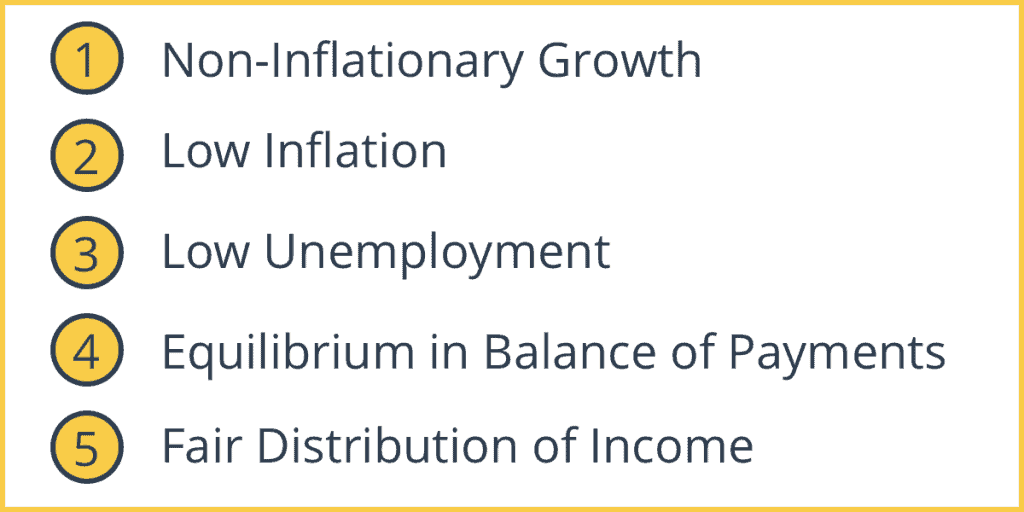Every country has macroeconomic goals that it wants to achieve; these goals or objectives are key to ensuring long-term stable economic success. These are the five main macroeconomic goals that most central banks aim to achieve. For example, the U.S. Federal Reserve targets the inflation rate at roughly 2%.
Five Macroeconomic Goals

1. Non-Inflationary Growth
In other words, this is stable and sustainable economic growth and development that is “real” (non-inflationary) over the long-term. Economic growth in an economy is an outward shift in its Production Possibility Curve (PPC). Another way to define growth is the increase in a country’s total output or Gross Domestic Product (GDP). The objective of the central bank and government would be an increase in economic growth without a rise in the rate of inflation.
2. Low Inflation
Inflation is the sustained increase in the price level. The rate of inflation is the change in inflation over a period. Central banks would like to keep the growth of the rate at which prices increase at low rates. As inflation rises, every dollar you own buys a smaller percentage of a good or service. For example, the U.S. Federal Reserve targets the inflation rate at roughly 2%.
3. Low Unemployment or Full Employment
Full employment occurs when the labor force (this counts as people who are actively seeking jobs or are already employed) is fully employed in productive work. A person is considered to be unemployed if he doesn’t currently doesn’t have a job and is actively searching for one. Having a lower rate of unemployment means that the economy is more productive. This objective means that as many people who want to be employed are employed, so the economy is running at or near full productivity.
4. Equilibrium in Balance of Payments
Equilibrium in Balance of Payments means that a country’s exports or imports should not be much larger than its imports or exports. Having a large balance of payments deficit or surplus is not beneficial for the economy.
5. Fair Distribution of Income
A fair or equitable distribution of income means that the gap between the rich and the poor is not too large. Fair or equitable doesn’t mean equal, but fair is a relative concept. What could be fair to one person, may not be fair to another. The government doesn’t want all the wealth concentrated with a small group of people.


Thank you for the information its so helpful 😃
Excellent contribution to the Economics body of knowledge!